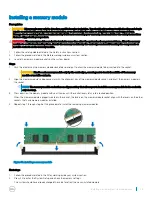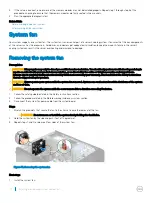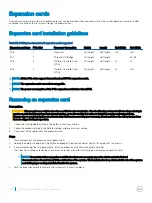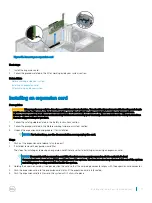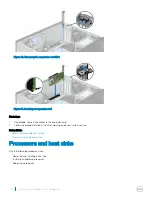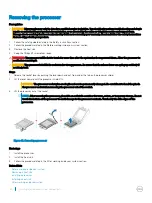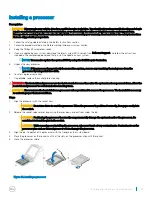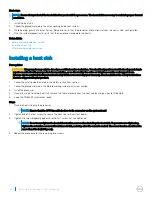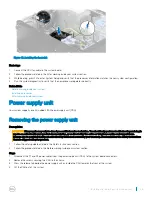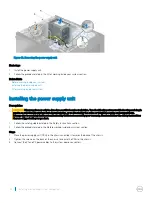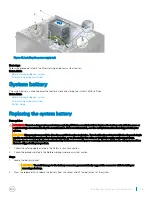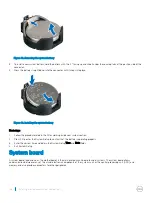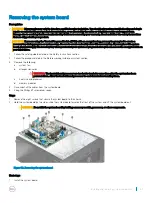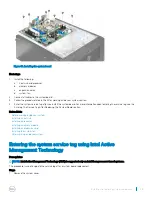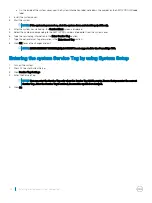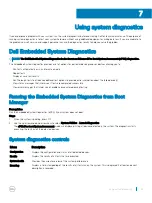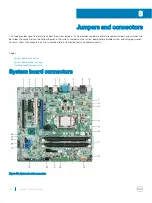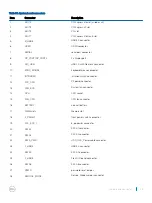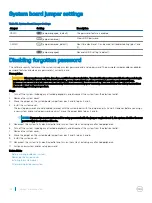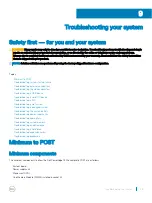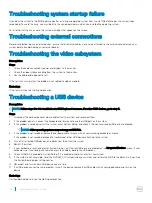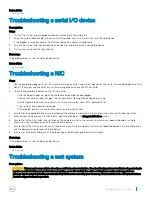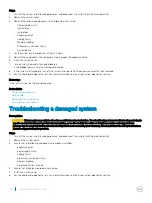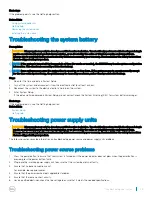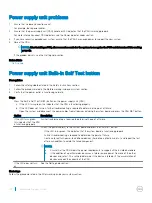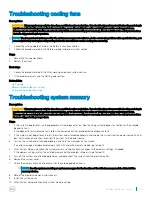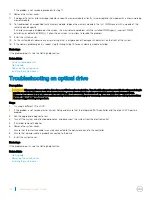
Removing the system board
Prerequisites
CAUTION:
Many repairs may only be done by a certified service technician. You should only perform troubleshooting and simple
repairs as authorized in your product documentation, or as directed by the online or telephone service and support team.
Damage due to servicing that is not authorized by Dell is not covered by your warranty. Read and follow the safety instructions
that are shipped with your product.
CAUTION:
If you are using the Trusted Program Module (TPM) with an encryption key, you may be prompted to create a
recovery key during program or system setup. Be sure to create and safely store this recovery key. If you replace this system
board, you must supply the recovery key when you restart your system or program before you can access the encrypted data on
your hard drives.
1
Follow the safety guidelines listed in the Safety instructions section.
2
Follow the procedure listed in the Before working inside your system section.
3
Remove the following:
a
system fan
b
all expansion cards
WARNING:
The heat sink and processor are too hot to touch for some time after the system has been
powered down. Allow the heat sink and processor to cool down before handling them.
c
heat sink and processor
d
memory modules
4
Disconnect all the cables from the system board.
5
Keep the Phillips #2 screwdriver ready.
Steps
1
Remove the eight screws that secure the system board to the chassis.
2
Hold the system board by the sides, slide the system board towards the front of the system and lift the system board out.
CAUTION:
Do not lift the system board by holding a memory module, processor, or other components.
Figure 50. Removing the system board
Next steps
1
Install the system board.
Installing and removing system components
87

